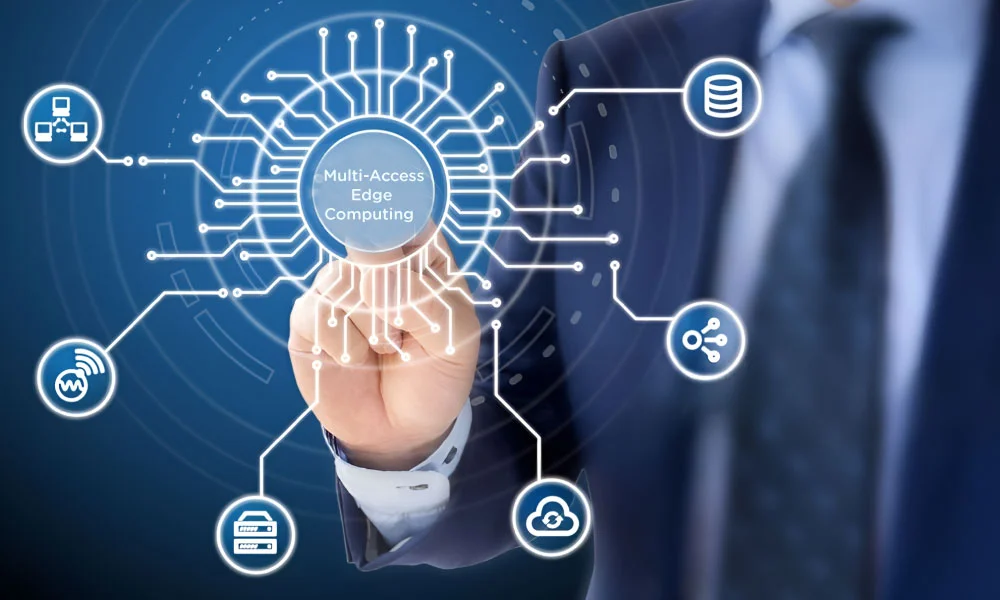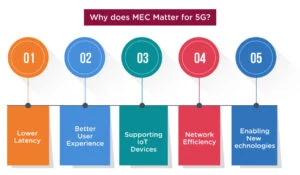The world is quickly changing due to new technologies. One major change is the arrival of 5G, which is the fifth generation of mobile networks. 5G provides faster speed, better connection, and less delay in communication.
As we shift into the 5G, there is a technology that helps make it work that is, ‘Multi-Access Edge Computing’, or MEC. So, what exactly is MEC, and how is it really important for 5G? Let's understand the concept in detail in this blog. But before learning about MEC, first, understand the concept of edge computing.
Understanding Edge Computing
Edge computing processes data closer to where it is needed. For example, the internet. You need data when you want to watch a video, play a game, or use an app. Usually, this data comes from a server that might be far away, even thousands of miles away. This long distance can cause delays, especially for things that need to happen right away, like video calls or online games.
This is where edge computing helps. Instead of sending data far away, it brings the computing power closer to the users. This reduces the travel time for data and allows the services to work faster and more responsively.
For instance, according to a published report, the edge computing market is expected to reach USD 110.6 billion by 2029, with an annual growth rate of 13%.
What is Multi-Access Edge Computing?
Multi-Access Edge Computing is an advanced type of edge computing made for 5G networks. It connects to various networks including mobile, Wi-Fi, and fixed broadband through "multi-access technology".
MEC puts computing resources such as servers, storage, and software closer to the user at the edge of the network. It allows data to be processed near the source, by this it reduces delays, and boosts the overall performance of applications. This computing depends on faraway central servers to complete the task.
MEC is important for 5G because it helps provide fast communication, high-speed internet, and the ability to connect many devices. It does this by processing data close to the user, which reduces delays and improves performance.
Why does MEC Matter for 5G?
- Lower Latency: MEC helps to reduce latency which means it reduces the delay between making a request and receiving a response, which is helpful for video streaming, self-driving cars, smart cities, and telemedicine. MEC makes sure the applications are running smoothly by processing the data close to the user.
- Better User Experience: With multi-access edge computing, apps and services work faster, as they don’t have to send data to a faraway server. For example, in gaming, data is processed locally instead of traveling long distances, this results in fast responses, fewer delays, and results in a better overall experience.
- Supporting IoT Devices: The Internet of Things (IoT) includes many connected devices like smart home gadgets and sensors. 5G aims to support millions of these devices, and MEC helps by processing their data locally. This is especially important for tasks that need quick responses, like industrial automation and healthcare monitoring, where delays can be critical.
For example, in September 2024, a published report stated that the number of connected IoT devices is expected to grow by 13%, reaching 18.8 billion worldwide. - Network Efficiency: MEC makes the 5G network more efficient, as it processes the data at the edge, thus not overloading the central network. This way, the network can handle much more traffic and provide better service to everyone even in areas with high demand.
- Enabling New Technologies: MEC enables new technology that would never have been possible before. For example, for augmented reality and virtual reality, real-time processing is needed to achieve an immersive experience. To make such technologies more accessible, integrate them to work seamlessly, and increase lifelike interactions, MEC can help support their faster load times.
Use Cases of MEC in 5G
Multi-access edge computing has vast applications in 5G and is going to influence many sectors. Below are some examples of MEC used in real life:
- Smart Cities: Applications of MEC can be brought into smart cities to manage traffic signals, monitor safety in public places, and optimize energy. Low latency and real-time processes of city systems will make them more efficient with faster response to ever-changing conditions thus making cities smart and safe.
- Autonomous Cars: With autonomous cars relying on real-time data to get through roads without accidents, Multi-access edge computing is helpful in processing sensor and camera data in the edge network so it can make quicker decisions.
- Healthcare: Telemedicine, remote surgeries, and real-time health monitoring can enhance health care. Doctors can get live data from patients who may be very far away. Healthcare services will be faster and more accessible this way.
- Industrial Automation: Within the factories, MEC can facilitate communication between the machines and make decisions in real-time. Increased production efficiency and avoiding downtime are possible by this. It also supports predictive maintenance.
Implementing MEC to Reinforce 5G Connectivity
Multi-Access Edge Computing, in general, is important because it processes the information closer to the user and reduces delays; increases speed with better user experiences. It thus plays a great role in developing the full capacity of 5G, from smart cities to autonomous vehicles up to healthcare applications. As it develops, so will MEC be key for driving innovation that creates a more connected and rapid world.
Ready to learn more about the latest technologies? Explore KnowledgeNile!
FAQ
1. What does MEC stand for in 5G?
A. MEC stands for Multi-Access Edge Computing, which helps process data closer to users in 5G networks.
2. What is the difference between MEC and edge computing?
A. Edge computing is a general term for processing data near the source, while MEC specifically refers to edge computing designed for 5G networks, connecting multiple types of networks.
3. What is 5G and edge computing?
A. 5G is the fifth generation of mobile networks that offers faster speeds and lower delays, while edge computing processes data closer to where it’s needed, improving speed and performance.
Also Read:
Artificial Intelligence for Computer Vision Applications
How Does Spatial Computing Integrate with Existing Technology Systems?






